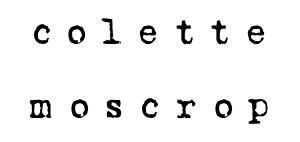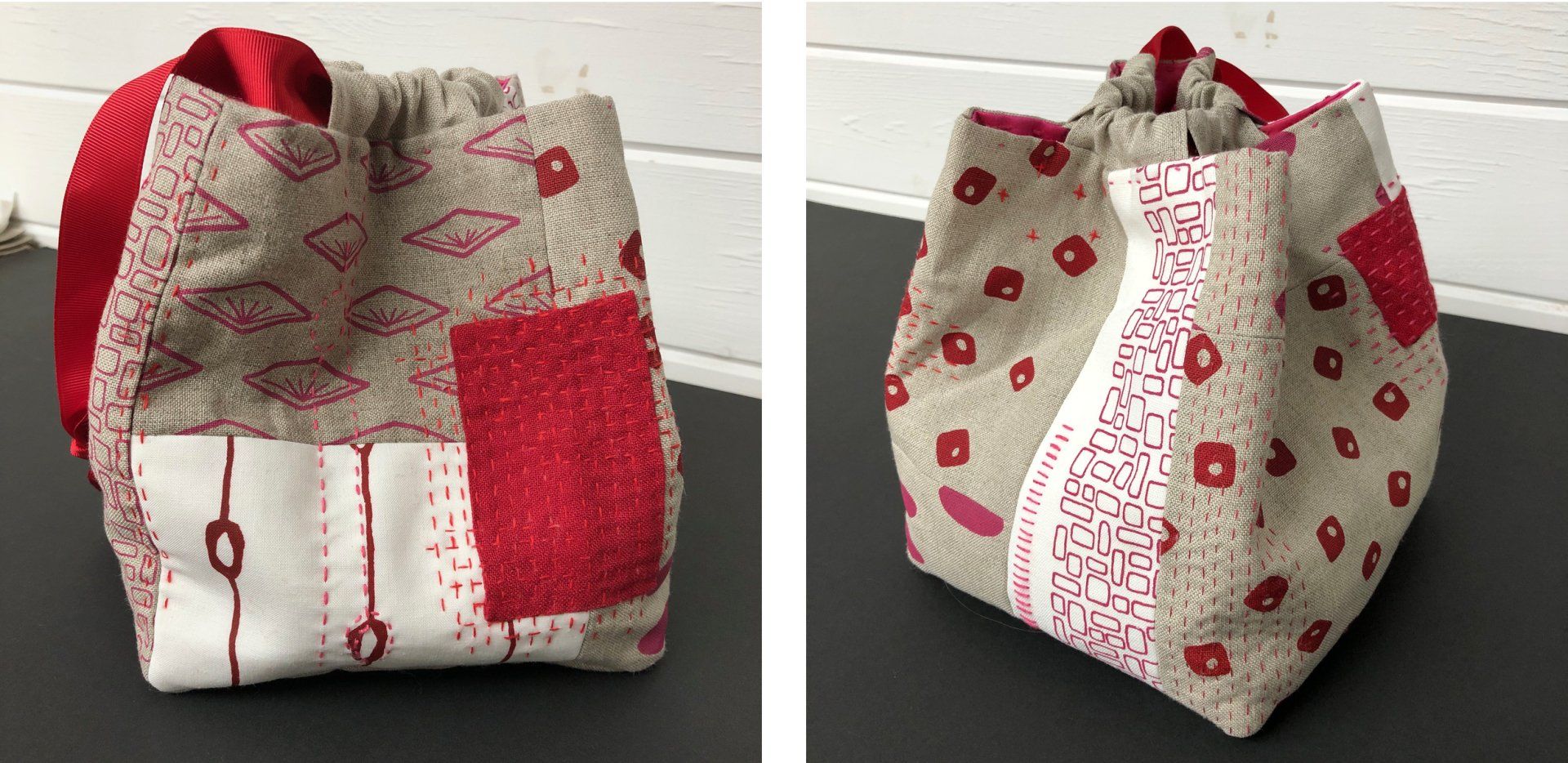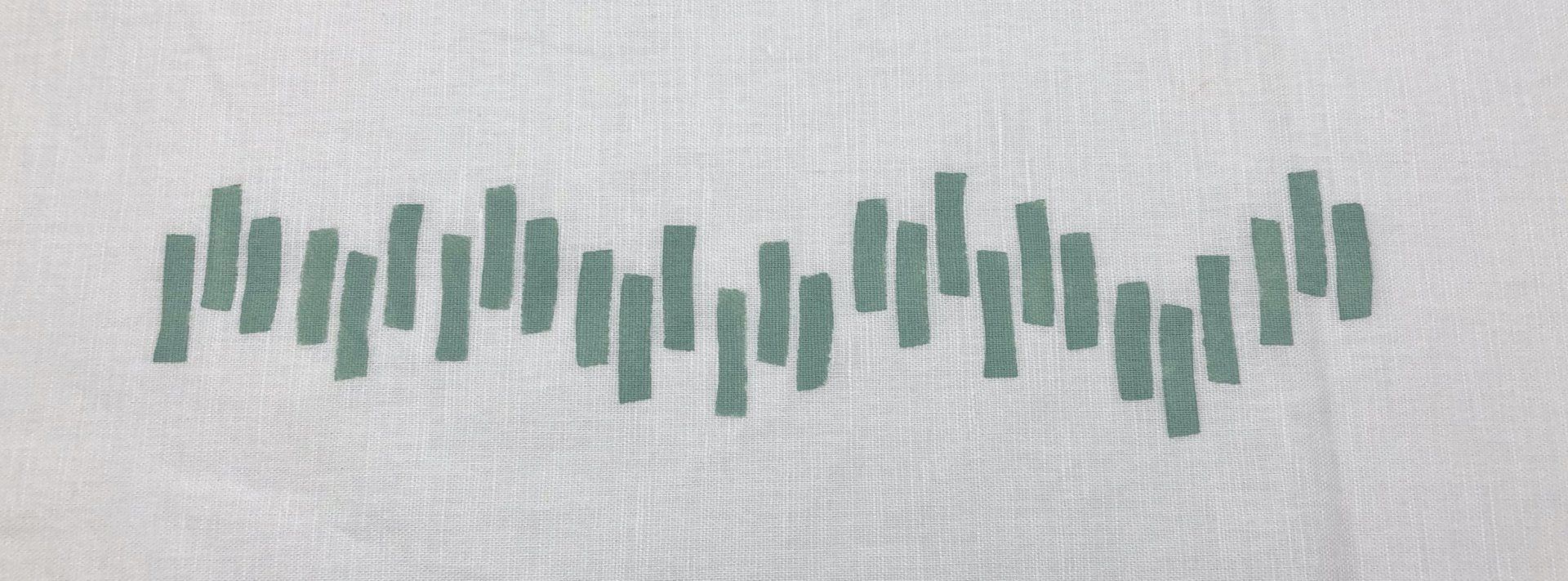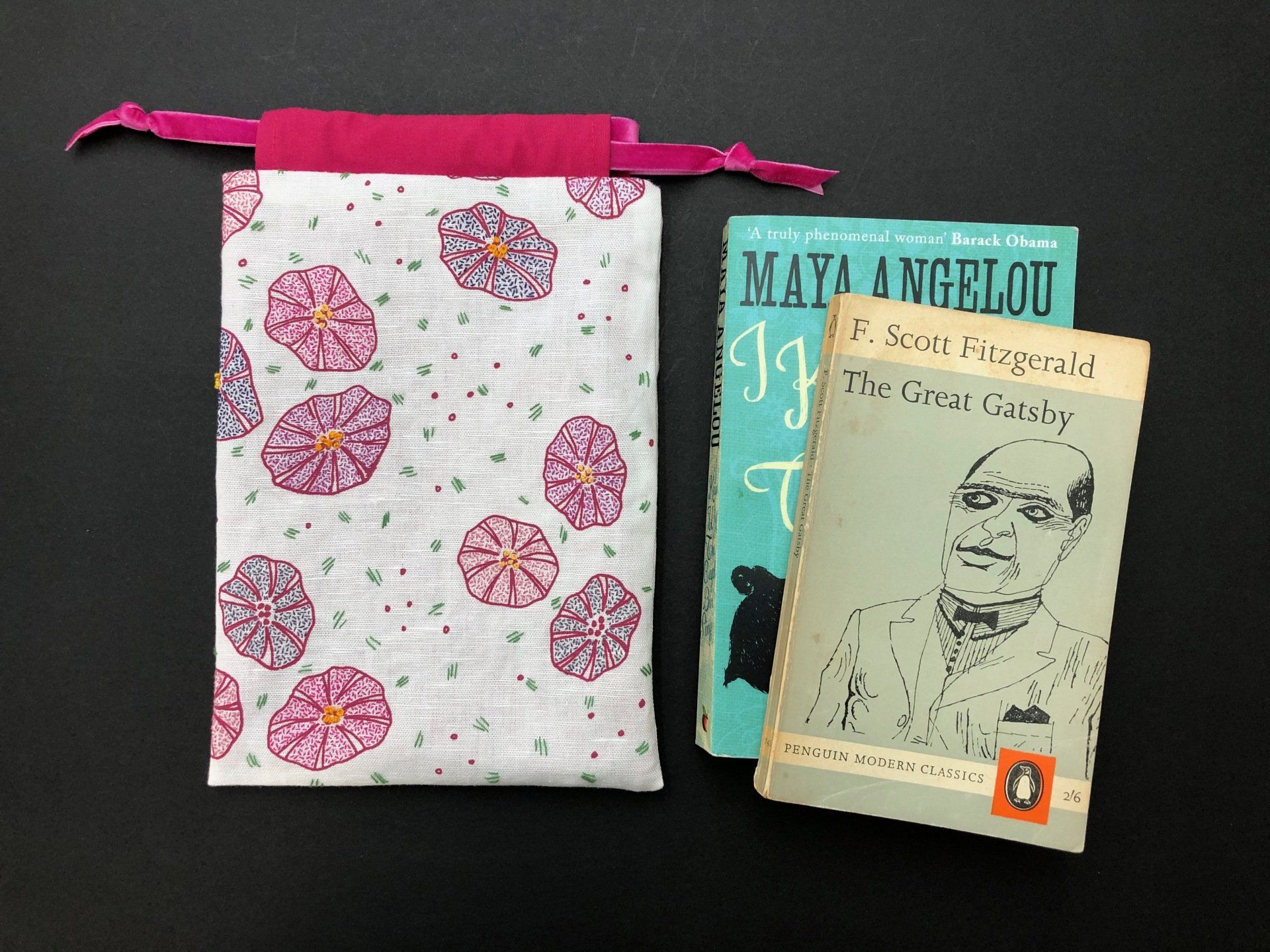Slow Stitching the Modern Japanese Rice Bag
Slow Stitching the Japanese Rice Bag
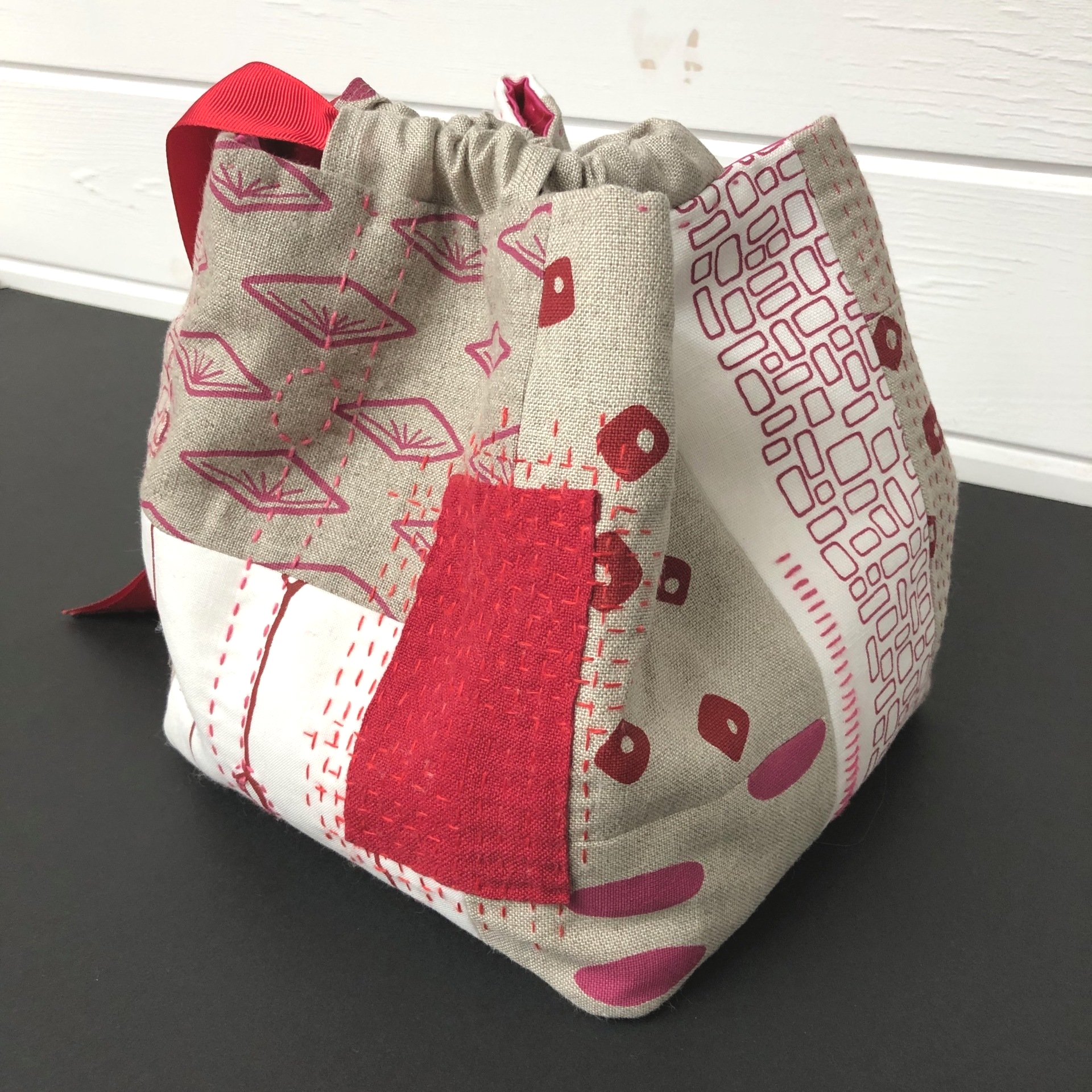
I thought I'd share with you some images of the Japanese Rice Bag I made earlier in the year. This project was one of the most soothing I've worked on as it was such a simple make with beautiful results.
I carefully chose my favoutite colours and prints, hand stitched in the garden over the summer and let my mind wander as I stitched freely, waiting to see what came next.
The pattern is The Modern Japanese Rice Bag by Karen Stevens and you can buy the pattern on Etsy here or you can buy a Kit in my shop
to make your own. I pieced most of the fabric together and then added a few patches of red that were scraps from a dress I'd made. I basted my fabric piece onto some cotton batting as I like the texture you get with the stitches and the bag is sturdy and squishy.
The pattern is easy to follow and it's a really quick make. I keep my current crochet project in it at the moment, I'm going to make another for some embroidery that I have on the go.
I lined mine with a fuchsia pink heavy satin that I have metres of, it's good to use some of it up!
There are some stitches on the bottom too, I like to add little details that are unexpected.
If you want to make one up in my fabrics, I've made a kit which includes the outer fabric, wadding and 3 linen threads, along with Karen Stevens' pattern, you'll find it in my shop here, if you need the lining and cord they're available in my shop too. Choose your favourite colours and then hunt through your scraps for some patches that will coordinate.
For the stitching I used a variety of threads - linen, silk and some DMC to add different textures to the stitches. Enjoy picking out your fabrics and colours and then the slow process of adding some stitches and details to make your bag personal.
Buy The Kit
Take a look at my tutorial Stitch to Add Texture
for some tips on stitching into this and making it your own.
** If you don't see a fabric panel in the shop in the colour you'd like, please get in touch. I have much more than is listed, let me know the colour you're interested in and I can list some for you.**
** If you don't see a fabric panel in the shop in the colour you'd like, please get in touch. I have much more than is listed, let me know the colour you're interested in and I can list some for you.**
share with a friend
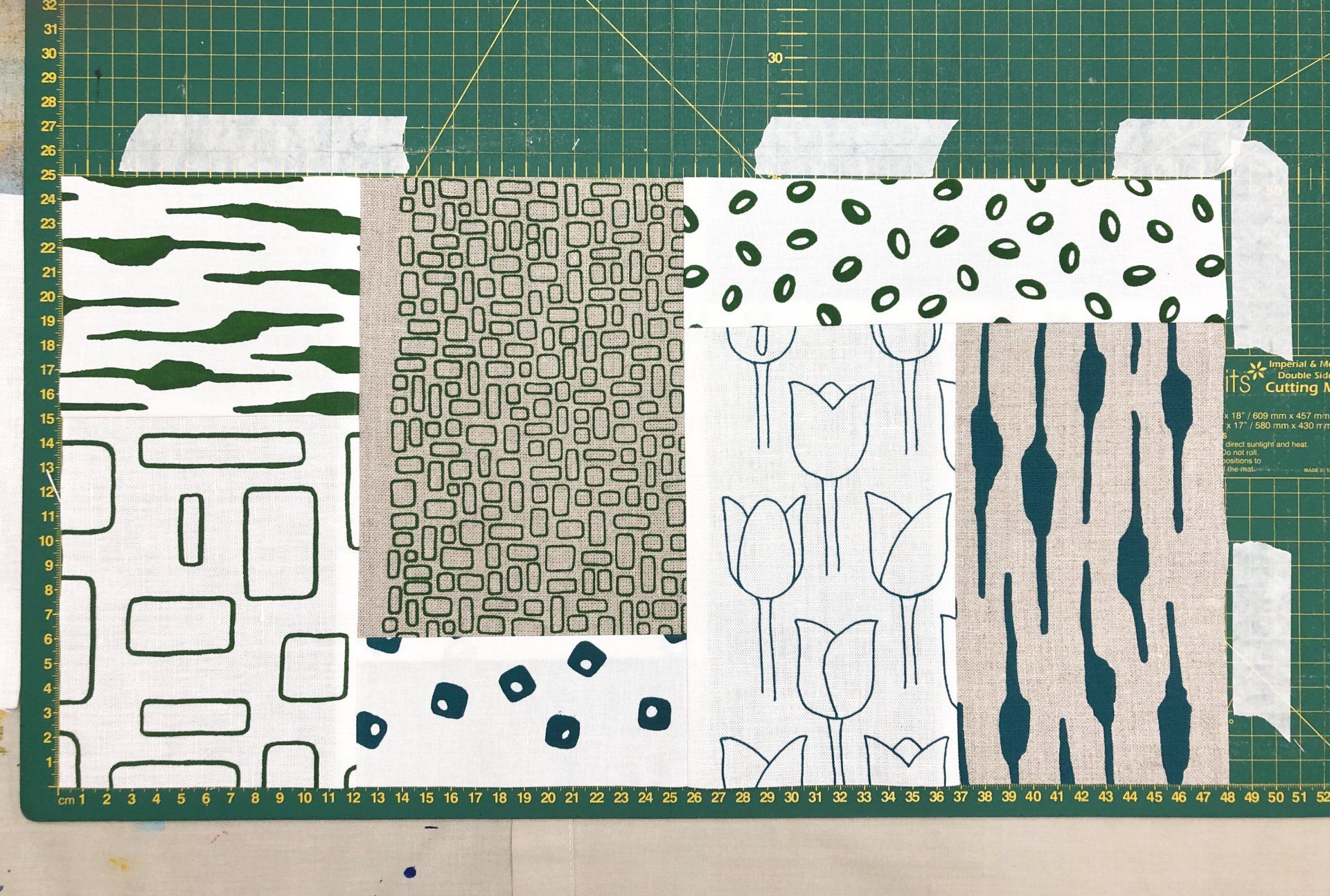
I'm often asked how to patchwork fabrics together to a specific size, such as when you may be making a purse / bag / Fabric Bucket etc. Using a solid piece of fabric is always an option, but it's more interesting to piece together your favourite fabrics to make your finished item more personal to you. I've put together this guide to help you, I often work in an improvisational style, as I like to play around with pattern and scale until I'm happy with the finished composition. * This tutorial does assume you know how to cut and trim fabrics with a cutting mat, acrylic ruler and rotary cutter, if you've not used these before, a quick web search will help you out. *
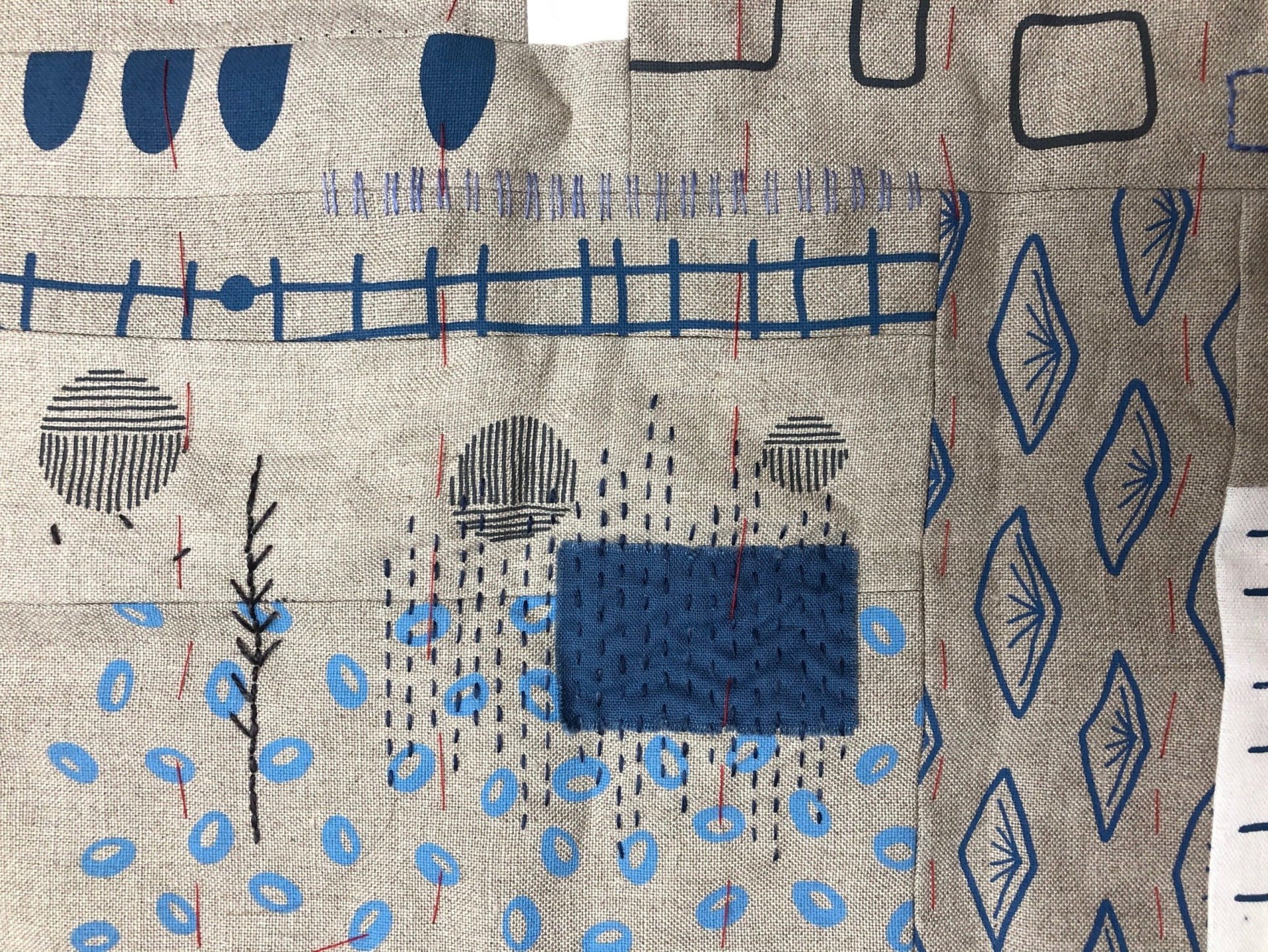
If you've seen my work at a show you'll already know that I'm all about the texture of a project. I love to use natural fibres and threads to build up a range of texture. I thought I'd share some images to inspire you to take the plunge and add some freestyle stitches to your projects. The first thing I usually add to my work is a layer of cotton wadding (batting) to the reverse of the fabric I'm going to be stitching on. I baste this (large tacking stitches) with a brightly coloured thread so it's easy to spot when I'm ready to remove it. You may have some wadding left over from quilt projects, if not try your local quilt shop / online stockist. Then it's time for the fun part, slow stitching and adding your personality to your work. I am no expert at embroidery, I simply draw and sketch with a needle and thread. I'm not looking for perfection and neat regular stitches, for me it's about the process. Enjoying the time it takes to stitch and seeing where the needle takes me. I don't plan my pieces before I start, I choose a couple of threads and dive in. If you're new to embroidery, here are a few tutorials to give you some guidance, Royal School of Needlework Stitchbank , DMC and The Spruce Crafts .
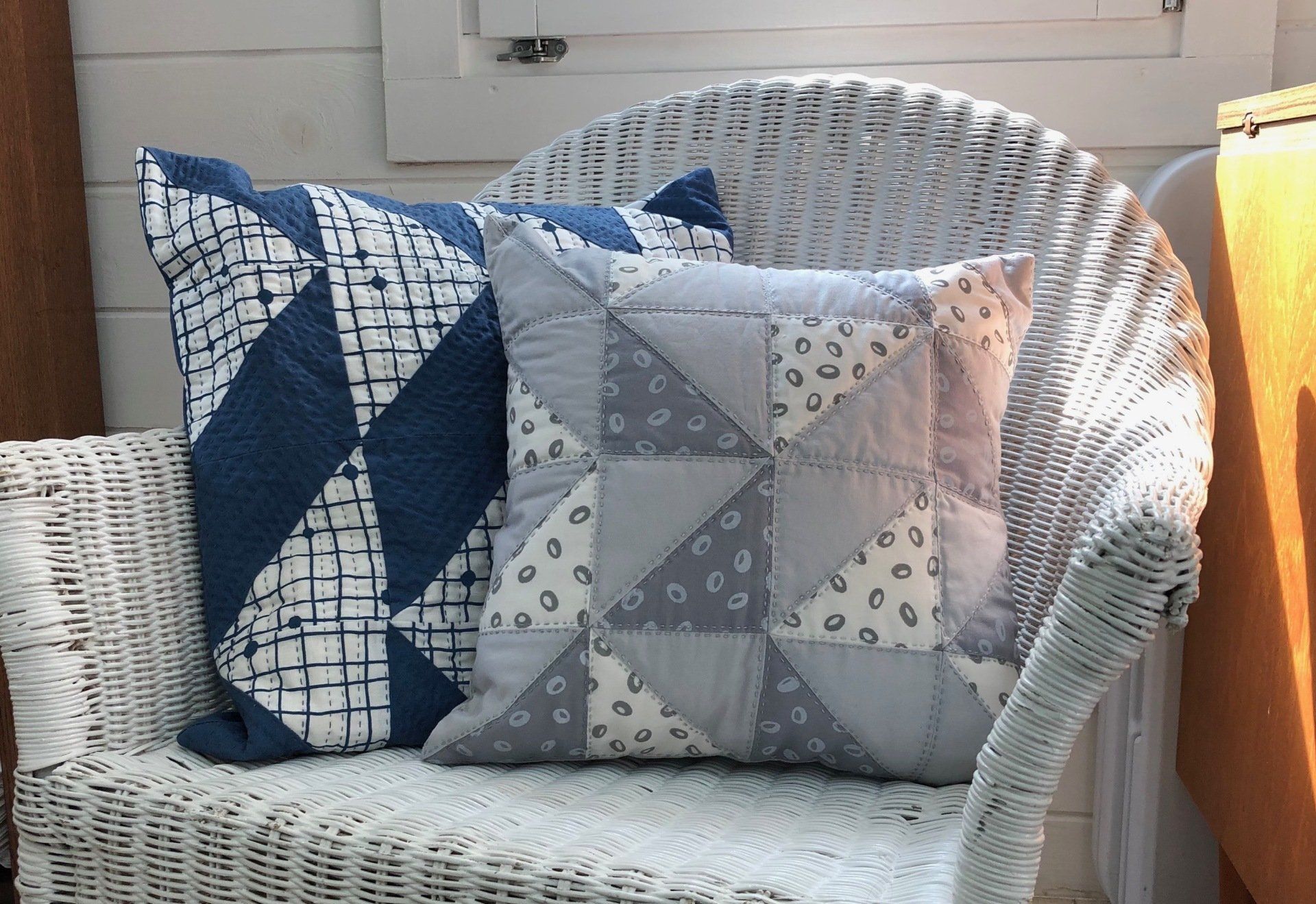
I'm a big fan of simple blocks and shapes when it comes to quilting, I like to see the print of the fabric and I like to add a solid colour to give the eye somewhere to rest and create a strong statement. I've recently finished making 2 cushions using HST's and I thought I'd share my process with you. For both cushions I used fabric panels from my shop . You don't have to use the same prints or colours, choose something that will compliment your home decor.
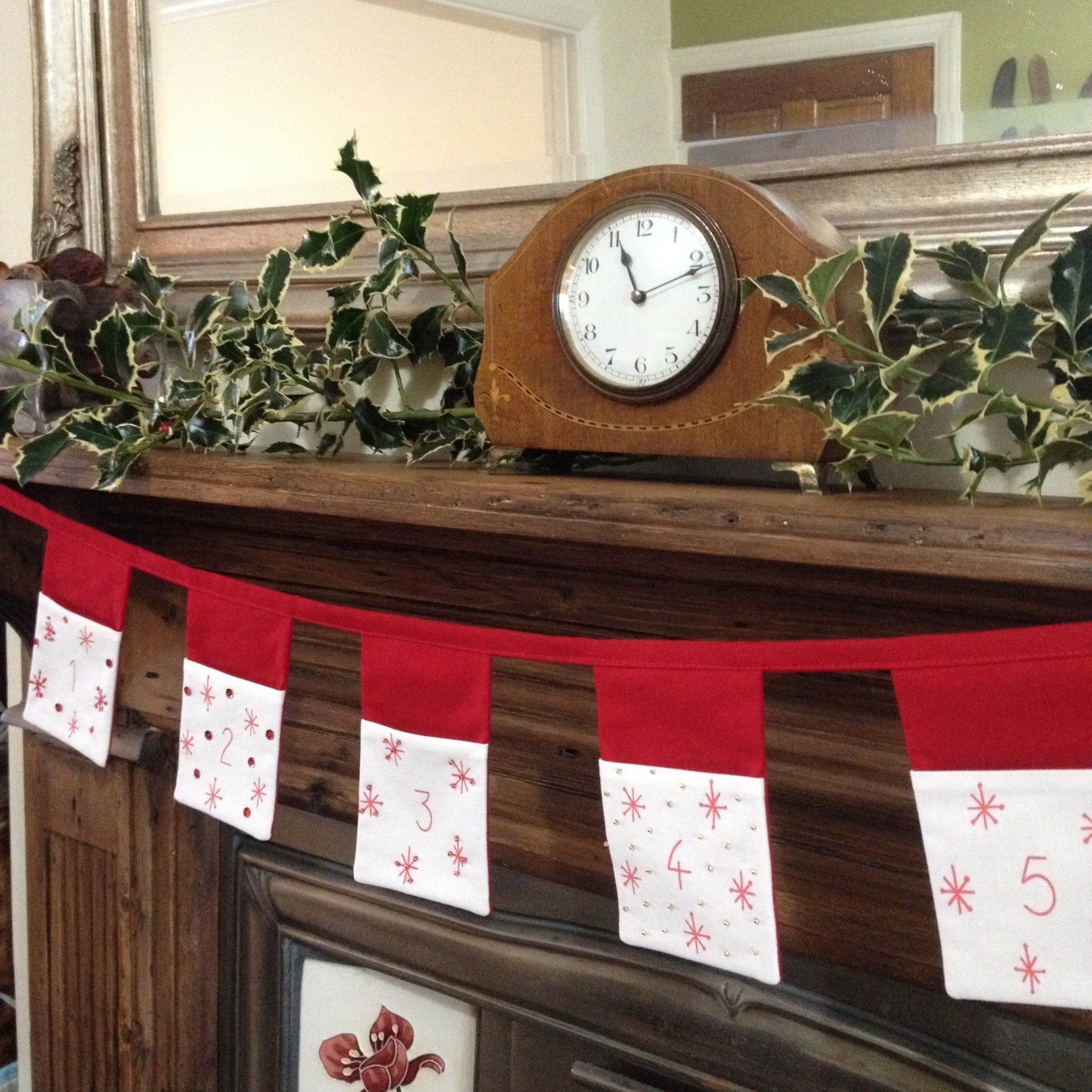
This bunting has pockets to fill with treats and festive challenges for your little ones on the run up to Christmas. You can make a long piece or break in into smaller sections depending on where you want to hang it in your home. You will need: 1 advent calendar panel 1.25m – 1.5m co-ordinating solid fabric (see point 8 below) Scissors / rotary cutter and mat / quilt ruler Thread Fabric marker – tailor’s chalk / fabric pencil, tape measure Cutting: cut along the red grid of your advent panel to give you 25 individual number squares. cut 25 squares of red fabric measuring 9.5 cm x 9.5cm cut 50 rectangles of fabric measuring 9.5cm x 14cm cut 4cm x length(s) you require for your bunting. (see point 8 below) If you want to decorate your number panels, do so before stitching up your bunting pockets, be sure to leave at least 1cm clear of the edges for seam allowance. 1 – right sides together, join a red square and a number square, stitching across the top edge with a 5mm seam allowance. 2 – from the wrong side, press the seam allowance towards the red fabric, then fold and press the red to the back of the number square. This will create the front of your pocket.
